Table of Contents
Breathing exercises can help us relax and facilitate sleep. However, their effectiveness can be limited in individuals who experience sleeplessness due to breathing problems. Conditions such as chronic obstructive pulmonary disease (COPD), asthma, and sleep apnea can have a considerable impact on our rest by compromising our ability to breathe.
Important factors for healthy sleep hygiene include our sleep position and having a quiet, dark room with a cool temperature. For many people, the most beneficial position for falling asleep and breathing easily is the side position. However, in this article, we will examine the pros and cons of different sleeping positions for people with breathing problems and provide additional practical recommendations.
The best sleep position for breathing: Which position fits you?
Adequate rest depends on multiple factors, including habits, age, health status, and previous respiratory conditions. In younger people, sleeping posture may be less relevant than in older individuals or those with certain respiratory conditions.
The three common sleeping positions (side, back, and stomach) have advantages and disadvantages, and one is likely to be more comfortable for you than the others. If you have breathing problems such as asthma, COPD, or severe sleep apnea, the optimal position would be to sleep on your side.
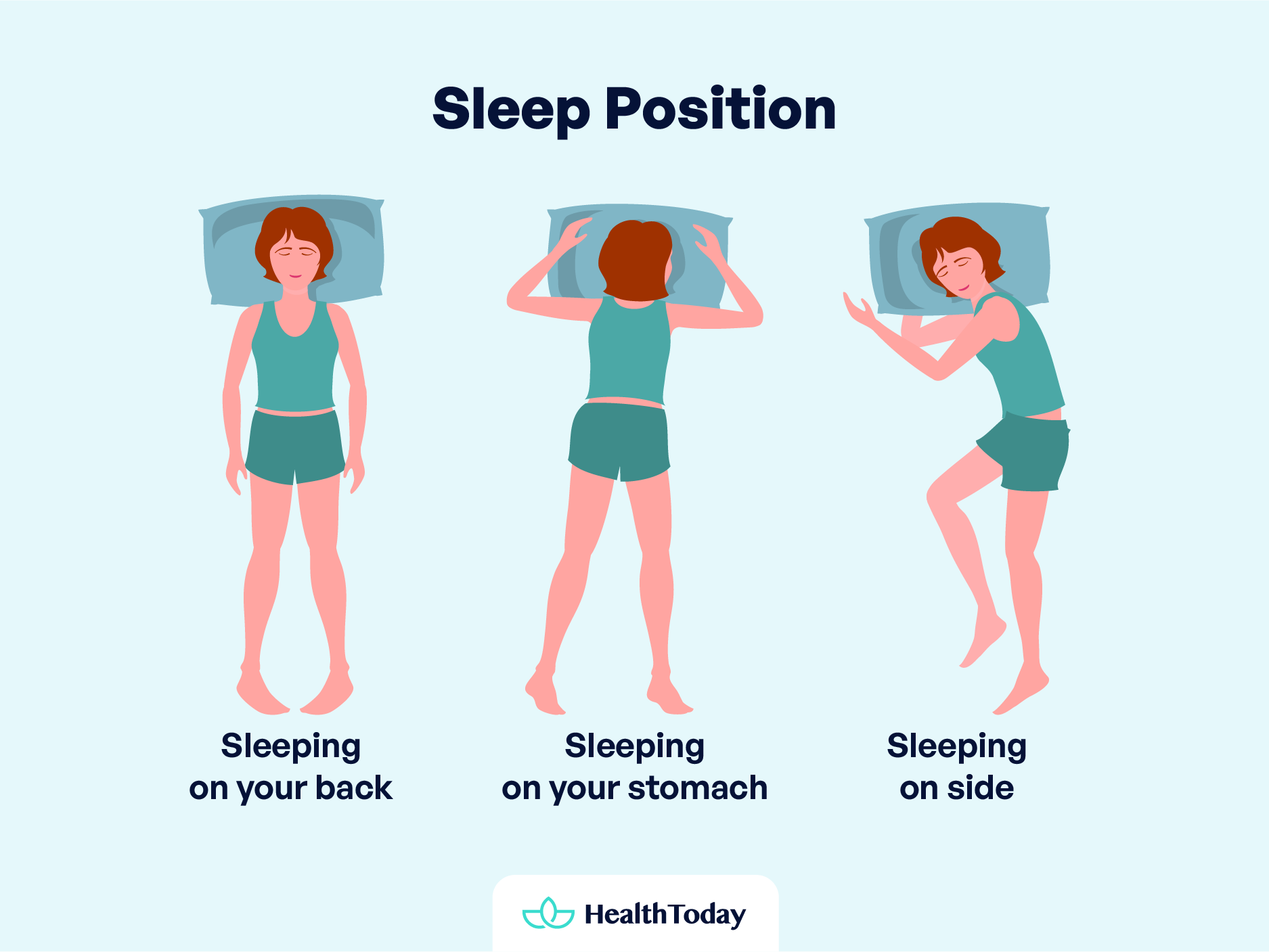
Sleeping on your back (Supine position)
This is the most common sleeping posture. It has several advantages, such as aligning the spine and, therefore, decreasing the tension between the vertebral discs, keeping the internal organs aligned, and preventing neck and back pain. This position may also have advantages for those with nasal congestion, especially when the head is elevated above the rest of the body.
A disadvantage to sleeping on your back is the potential for blockage or narrowing of the airway, which can trigger sleep apnea or snoring. For this reason, this position is not the most recommended for those who experience breathing difficulties during sleep (1).
Sleeping on your stomach (Prone position)
Sleeping on the stomach is the least recommended position because this posture can cause uncomfortable neck and vertebrae rotation over time, leading to neck and back pain.
This position is discouraged in newborn babies due to the risk of sudden infant death, as there is a risk of airway obstruction (2).
However, in people with respiratory conditions such as pneumonia or inflammatory respiratory illnesses, an improvement in respiratory capacity has been observed when sleeping on the stomach. These improvements have been observed mainly in hospital settings under medical supervision (3).
Sleeping on your side
The best position to sleep is on the left side. This position offers many advantages, including prevention of neck and back pain, improved breathing, reduced snoring, and reduced gastroesophageal reflux (4).
In addition to the benefits mentioned above, sleeping on the left side provides better blood flow, which helps maintain stable blood volume and blood pressure (5). This position also prevents compression of the aorta, which carries blood from the heart to the rest of the body.
This posture is especially suitable for pregnant women, particularly during the last three months before delivery. Sleeping on the left side helps maintain good blood circulation by preventing the weight of the baby and the mother’s organs from pressing on the large blood vessels, which benefits both the fetus and the mother (6).
An extra tip is to use a pillow between the knees to avoid tension in the hip or lower back. This promotes proper alignment and reduces stress on the spinal discs.
However, if you have certain heart conditions, such as congestive heart failure, your doctor may recommend you sleep on the right side.

Which breathing problem can impact your sleep?
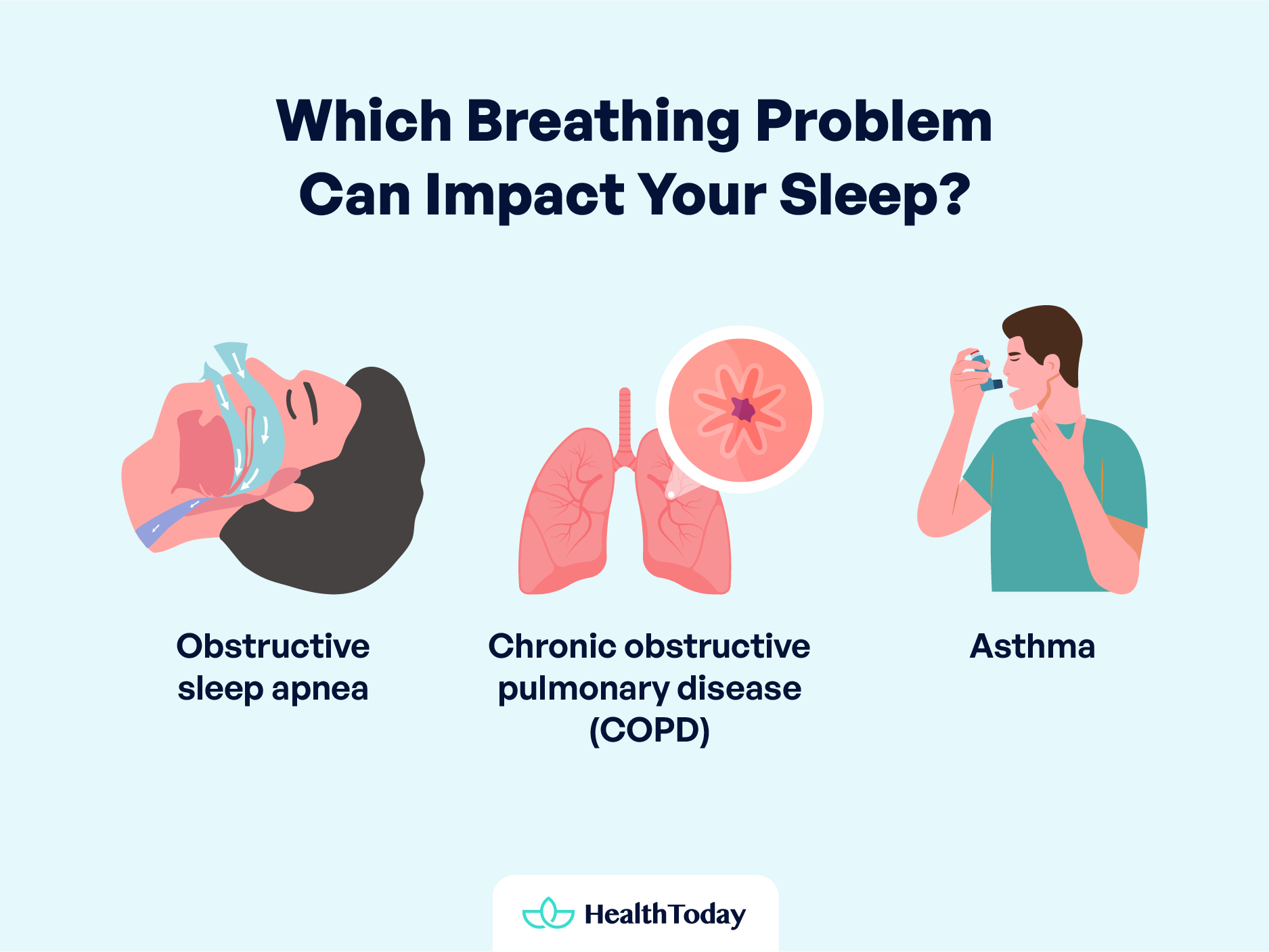

Breathing problems can negatively impact the quality of sleep, causing additional health problems. Lack of restful sleep due to difficulty breathing can trigger chronic fatigue, irritability, concentration, and memory problems, as well as an increased risk of chronic diseases such as hypertension and diabetes (7).
The most frequent respiratory diseases that affect sleep are:
- Obstructive sleep apnea
- COPD
- Asthma
Obstructive sleep apnea
Obstructive sleep apnea (OSA) is a sleep disorder characterized by partial or total airway blockage during sleep, resulting in breathing obstruction. Multiple factors may cause this blockage, but obesity is a common risk factor. The accumulation of fat around the airways can reduce their diameter and modify their shape, increasing the risk of obstruction.
Symptoms of obstructive sleep apnea may include:
- Loud and persistent snoring
- Breathing pauses during sleep
- Excessive daytime sleepiness
- Fatigue
- Morning headache
- Difficulty concentrating
The diagnosis of OSA is made by polysomnography, a test that records different physiological parameters during sleep, such as brain activity, heart rate, and respiration.
Treatment
Treatment of obstructive sleep apnea may vary according to severity and individual needs and include:
- Lifestyle changes, such as losing weight, avoiding alcohol, and quitting smoking
- The use of continuous positive airway pressure (CPAP) devices to keep the airway open during sleep
- Oral devices that help maintain the jaw in a position that prevents airway collapse
- Surgery to correct physical abnormalities that contribute to airway obstruction
It is important to seek the care of a physician specializing in sleep disorders if you experience symptoms of obstructive sleep apnea. Proper treatment can significantly improve quality of life and reduce the risk of long-term complications.
Chronic obstructive pulmonary disease (COPD)
Chronic obstructive pulmonary disease (COPD) is a chronic, progressive respiratory condition that affects the lungs and results in shortness of breath. It usually occurs in people over 55 years old and is closely associated with prolonged exposure to tobacco smoke, whether from cigarettes, cigars, or pipes. Other less common causes include certain genetic diseases and exposure to respiratory irritants such as wood smoke, air pollution, industrial chemicals, and dust.
Symptoms of COPD include:
- Chronic cough, often accompanied by excessive sputum production.
- Shortness of breath, chest tightness, and wheezing in more advanced stages.
These symptoms worsen gradually over time and can significantly affect daily activities and quality of life.
Diagnosis of COPD is based on the evaluation of symptoms, medical history, and pulmonary function tests, such as spirometry, which measures how much air a person can exhale and how fast. Additional tests, such as chest X-rays or arterial blood tests, may be performed to assess the severity of the disease and to rule out other conditions.
Treatment
COPD treatment is usually lifelong and aimed at improving symptoms and quality of life. It includes measures such as smoking cessation, regular physical activity, bronchodilator medications, and inhaled corticosteroids to open the airways and reduce lung inflammation. In more severe cases, home oxygen therapy and pulmonary rehabilitation may be necessary.
COPD prevention focuses primarily on avoiding exposure to tobacco smoke. It is estimated that 85-90% of COPD cases are related to smoking, and 15-20% of smokers may develop the disease in their lifetime (8). Other preventive measures include avoiding exposure to secondhand smoke and taking precautions in work environments where irritants may be inhaled.
Asthma
Asthma is a chronic lung disease that affects the airways and is characterized by inflammation and narrowing of the airways in response to certain triggers, such as exposure to allergens (pollen, dust mites, animal hair, dander, mold, etc.) or irritants.
The onset of asthma can occur from infancy to adulthood.
Symptoms of asthma may include:
- Cough, which may be intermittent or persistent, depending on the severity. It is usually dry and without sputum production and tends to be worse at night or early in the morning.
- Wheezing caused by the narrowing of the airways due to inflammation or mucus buildup. A whistling sound is heard when exhaling or inhaling.
- Chest tightness is felt as a feeling of pressure or squeezing, especially in more advanced cases of the disease.
The diagnosis of asthma is usually made based on the presence of the above symptoms, medical history, and the evaluation of lung function through tests such as spirometry.
Treatment
Asthma treatment focuses on controlling symptoms and preventing asthma attacks. Physicians usually prescribe bronchodilators to open the airways and inhaled corticosteroids to reduce inflammation. In addition, it is important to identify and avoid asthma triggers, such as allergens and irritants, and to follow up regularly with a physician to adjust treatment as needed.




How to sleep better with breathing problems?
Sleep is crucial for cellular repair after the stresses of the day, making it of utmost importance for health. Respiratory diseases that disrupt sleep should be treated after a proper diagnosis to avoid complications. In addition, there are healthy sleep habits that promote optimal conditions for restful sleep.
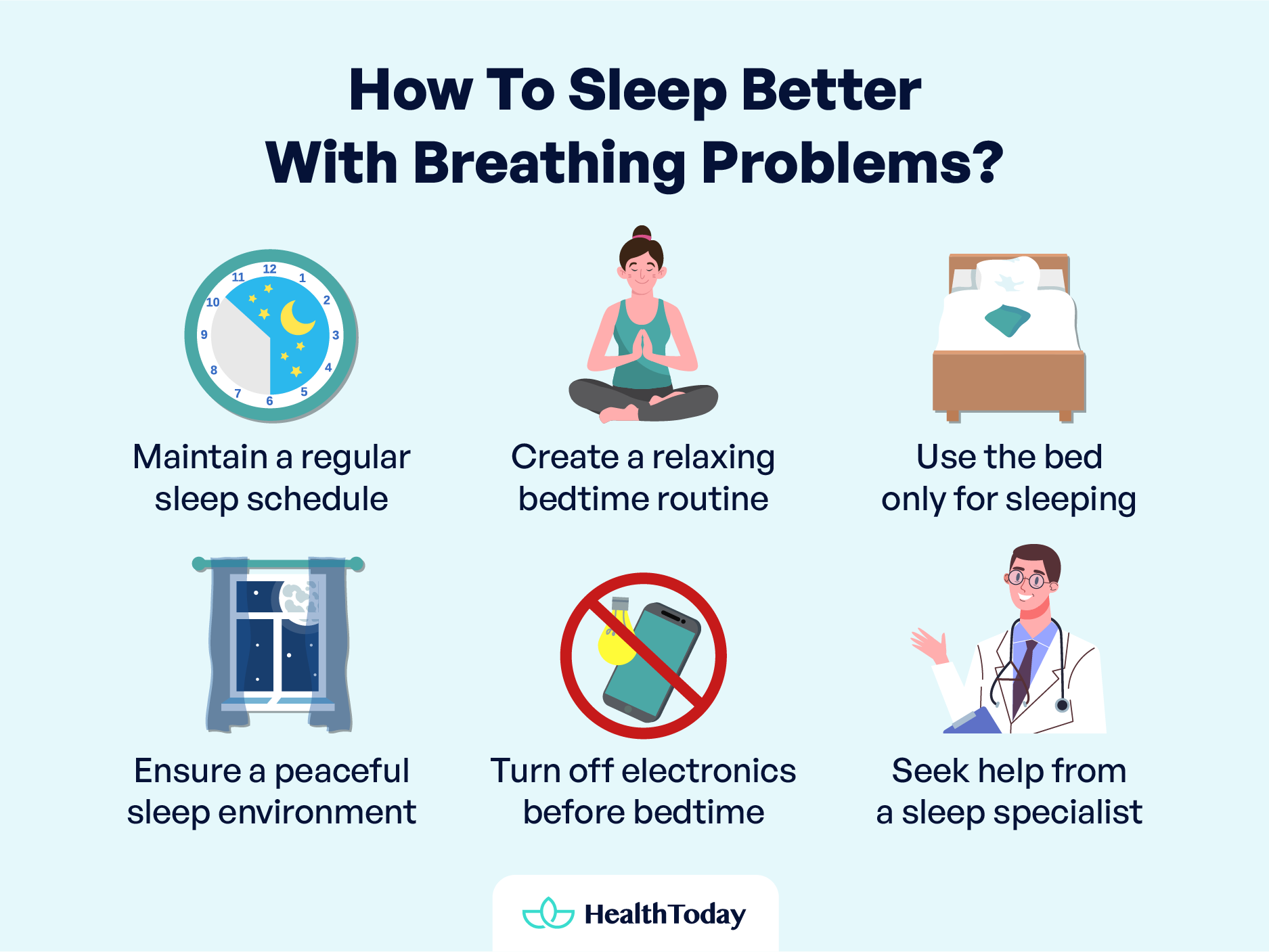

Sleeping tips
For proper sleep hygiene, here are seven tips (9):
- Maintain a regular sleep schedule.
- Wake up at the same time every day, even on weekends or vacations.
- Set a bedtime early enough to ensure 7 to 8 hours of sleep. If after 20 minutes you cannot fall asleep, get out of bed. Engage in quiet activities, avoiding exposure to intense light.
- Create a relaxing routine before going to bed.
- Use the bed only for sleeping. Avoid eating in bed.
- Make sure your bedroom is a quiet and relaxing space, maintaining a comfortable, cool temperature.
- Turn off electronic devices at least 30 minutes before bedtime.
If you still have difficulty sleeping despite proper sleep hygiene and treatment of associated medical conditions, we recommend that you visit a sleep specialist.




What is the best position to sleep to clear your lungs?
The best sleep position to promote lung clearance and ease breathing is typically sleeping on your side, particularly on your left side. This position can help prevent the collapse of the airways and reduce symptoms of conditions like sleep apnea, asthma, and COPD.
What are the symptoms of low oxygen at night?
Symptoms of low oxygen levels at night, also known as nocturnal hypoxemia, include shortness of breath, rapid breathing, wheezing, coughing, confusion, restlessness, an increased heart rate, and headache. Seeking medical attention if you experience these symptoms is essential, as low oxygen levels can have serious health implications.
Can pillows cause sleep apnea?
While pillows themselves do not directly cause sleep apnea, poor positioning with multiple pillows could tilt the head backward, potentially obstructing the airway and worsening sleep apnea symptoms. However, sleeping with your head elevated at an angle, like when using a wedge-shaped pillow, can help open your airway.
What position is worst for sleep apnea?
The supine position, or sleeping on your back, is often considered the worst position for individuals with sleep apnea. In this position, gravity can cause your tongue and soft tissues of the throat to collapse backward, obstructing the airway and increasing the likelihood of apnea episodes and snoring.
Which position is the worst for shortness of breath?
For individuals experiencing shortness of breath, particularly those with conditions like COPD or asthma, sleeping in a supine position (on your back) can worsen symptoms. In this position, the weight of your chest and abdomen can compress your lungs, making breathing more difficult.
Summary
Restorative sleep is essential for overall health and well-being. During sleep, the body carries out important physical, mental, and emotional repair and regeneration.
Finding the right sleeping position can significantly influence sleep quality and respiratory health. Sleeping on the side, especially the left side, is generally considered to be the most beneficial position for easing breathing and reducing symptoms of respiratory conditions such as sleep apnea, COPD, and asthma.
In addition to position, sleep habits are critical to ensuring restful sleep and overall good health. This includes maintaining a regular sleep and wake schedule, creating a sleep-friendly environment in a quiet, dark, cool bedroom, establishing a relaxing bedtime routine, and associating the bed only with sleep. It is important to limit exposure to bright light and avoid stimulating activities before bedtime, as well as avoid heavy meals and the consumption of stimulants such as caffeine and alcohol.
If you continue to have difficulty sleeping, it is recommended that you visit a sleep specialist for a proper diagnosis and treatment.









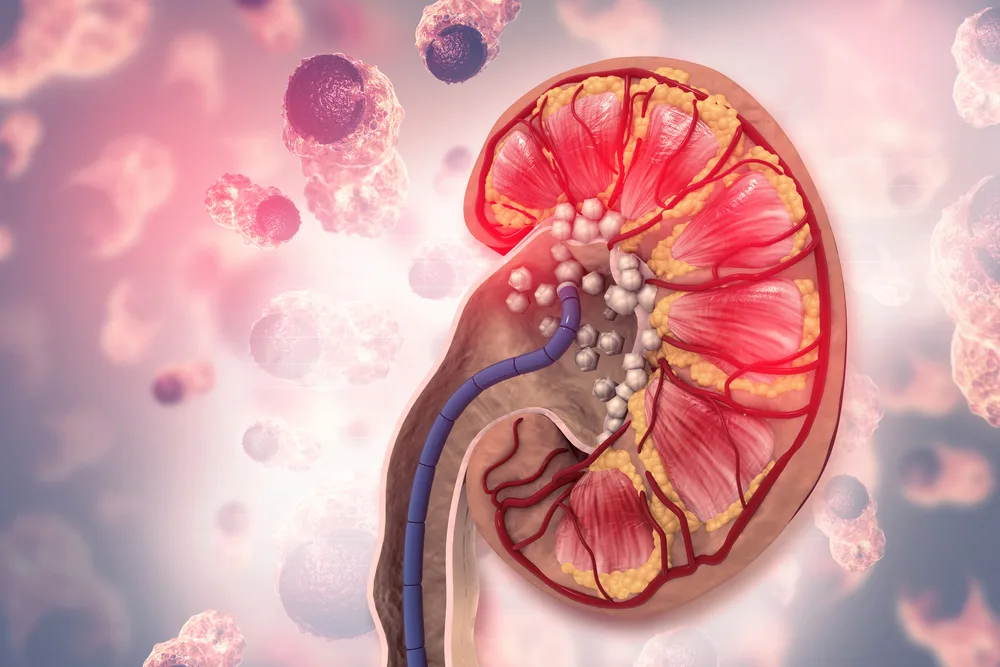




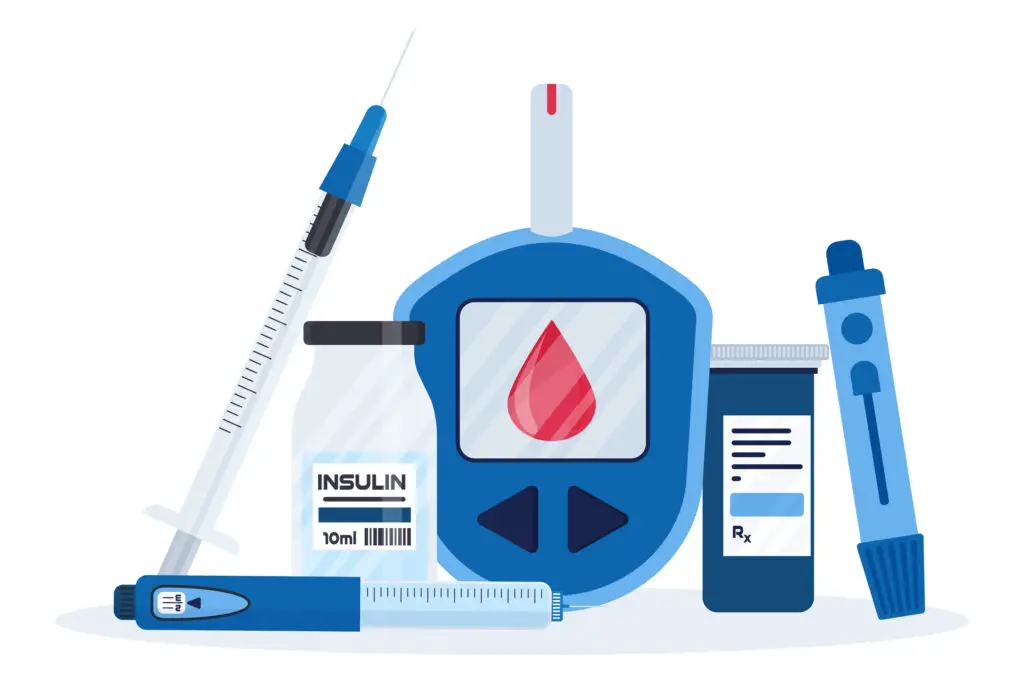

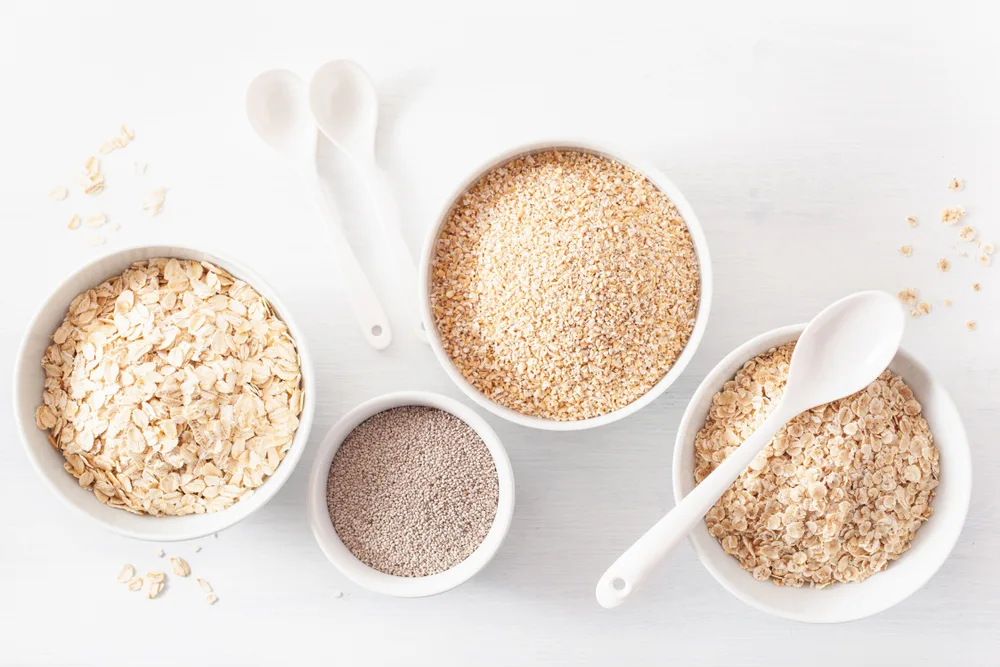
Comments
0